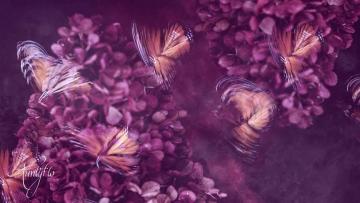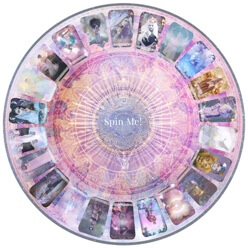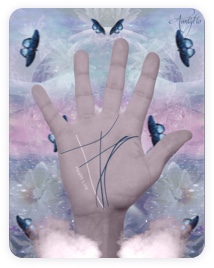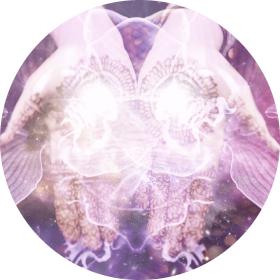Monarch Butterfly

There is over a million different insects in the world and the monarch butterfly attracts the most attention. Maybe you have visited my website because you noticed this wonderful butterfly fluttering around you, or you dreamed of the monarch butterfly. I’m Flo and I am here to help you understand the spiritual meaning of this butterfly, as well as all the facts including their spectacular migration. Well, I will cover this so let’s get cracking. Butterflies are amazing creatures.
What is a monarch butterfly?
The monarch butterfly is considered to be the king of the butterflies, and the most beautiful of all the butterflies in the world. In total there are four specific cycles of the monarch butterfly. The lifecycle is quite easy to understand: 1) Egg, 2) Larva, 3) Pupa and then 4) adult. That is the four stages. The Monarchs lay the egg on milkweed which is known as Asclepiadaceade. The female can lay around 300-400 eggs in a period of 5 weeks in one year. Each egg may not make it through adulthood due to a poor survival rate, which was documented by the scientist Oberhauer in 2001.
The monarchs lifecycle from being an egg into an adult can be a fascinating thing to watch. Some monarchs can live up to 9 months! I have purchased a kit from amazon and bred five butterflies and watched them hatch which was simply amazing. The monarch has a head, throax and abdomen, six legs and two wings. It passes through four generations in a year, which are four different type of monarch butterflies until it goes back to the first generation and cycle continues. During the month of February and March, this is the time the last generation of hibernating monarch butterflies materialize to find a mate. After mating, they fly to the east and north in order to lay their eggs. The laying of eggs starts the first stage of the monarch butterfly and the first generation of the new year.
During the month of March and April, milkweed plants, which I mentioned earlier are used to lay eggs by the female monarch butterfly. These eggs eventually hatch into baby caterpillars. From the time the egg is laid to the time of hatching into caterpillars, it takes about four days. The baby caterpillar then starts feeding on the milkweed plant in order to gain in weight and length. It will be a fully grown caterpillar in about two weeks and then it will seek a dry place to attach itself so that it can start to metamorphose. Using silk, it will attach itself to a leaf or a stem and then transform into a chrysalis. When the caterpillar sites inside the chrysalis it seems nothing is happening, but, as I am sure you are aware there are remarkable changes going on in the body of the caterpillar, transforming itself to a beautiful butterfly.
After the 10 days, the Monarch caterpillar will come out of the chrysalis as a beautiful butterfly. Out of all the butterflies the monarch lives the longest (up to 9 months) but normally this butterfly enjoys it’s short-lived life of about two to six weeks. This first generation Monarch butterfly will immediately die after laying eggs so that the second generation monarch to start developing. The months of May and June is when the second generation Monarch is born with the third generation being born between July and August. The stages of all the generations are the same, dying after two to six weeks after laying eggs for the next generation to continue. The difference is known in the fourth generation monarch, which is totally different from the first three generations. This butterfly is born in September and October and will go through the same stages like the other one except for one. It doesn’t die after two to six weeks but migrates to warmer climates like in California or Mexico, where it will live for between six to eight months until it starts the whole process again.
Through the processes of the monarch butterfly, it enables the monarch to stamp its presence throughout the year, but at the same time, controls the population naturally. I am going to give you some interesting facts about the monarch butterfly and move onto the spiritual meaning slightly later. Here are the facts about the monarch butterfly:
- Did you know that monarch butterflies communicate with colors and scents? The female is attracted to the male through the male releases chemicals stored in its scent glands on the hind wings.
- The male monarch butterfly has black dots on the wings and females do not have the black dots.
- Before entering the pupa stage, the monarch larva which is the caterpillar sheds or molts its skin five times. Each stage is referred to as an instar.
- The monarch butterfly signals to other animals that it is very dangerous (not to be messed with!) by having bright orange colors which serve as a warning to predators that they should attack at their own risk.’
- A monarch caterpillar can gain as much as 2700 times its original weight.
- The Monarch butterflies can migrate over 3,100 kilometers
- Amongst all other insects, the monarch butterflies are known for their capacity of making transatlantic crossings.
- The most eggs a Monarch layed was 1700 according to scientific research.
- Monarch caterpillars smell with their antennas and use their compound eyes to locate the flowers.
- Monarch’s use drafts of warm air to help them glide when they are migrating
- Monarch also uses the magnetic field of the other to migrate and this means that they depend on the position of the sun.
- Mating happens in spring and courtship taking place.
- While caterpillars, Monarch’s feed on milkweed, but when they become butterflies, they solely rely on nectar as their source of food.
- According to an observation carried out in Mexico, it was found out that, the monarch butterflies sleep in winter on the trunks and branches of fir trees. If they are many, the branch may tend to get heavy with their weight and break off.
- In Australia, the monarch butterflies are known as wanderer butterflies. In some cultures, they are known as milkweed butterflies because they feed on milkweed at their larvae stage. Their scientific name is Danaus plexippus.
- The Monarch can easily distinguish these butterflies due to the unique pattern on their wings; a distinct black and orange pattern with females having darker veins in their wings and males having hind wings with a spot at the center of each.
What is the spiritual symbol of a monarch butterfly?
Monarch butterflies are beautiful creatures and they can enter your life with many spiritual messages. I will now provide you with the spiritual meaning of this wonderful butterfly.
A sign from the angel
Butterflies are known to be signs that angels are close by. When you see a monarch butterfly is has been documented in many ancient texts as a sign from your guardian angel. They are reminding you that they are present in your life. It is a sign that you are on the right path of your life path and you should keep up and that is why you are seeing it. I will say, that angels are protecting and guiding you at all times if you happen to see a monarch butterfly flying by you.
A sign from the spiritual realm
If you lost someone you loved in the recent past and you see a monarch butterfly, it could be a sign from them. I always believe that seeing a butterfly can indicate the spirit of someone that has passed on. It is believed that communication between the living and the dead connects through butterflies. It is said, in ancient texts that the butterflies easily travel between the worlds of the living and the dead and thus they can be messengers of the spirit world to us. If you cherished someone who died in the near past, seeing this butterfly is passing a message to you that their spirit is still alive. It is a sign of wellbeing.
A sign of spiritual transformation
A monarch butterfly can appear to you to enable you to know that, you are on the right spiritual path. Seeing the monarch butterfly indicates that, you achieved the transformation that you have been working towards. That you are on the right path towards spiritual enlightenment. I believe need to continue towards spiritual wisdom path and be ambitious as always. The “monarch” is protecting you and they will remain to be your spirit guide.
A sign of rebirth and transformation
Transformation and rebirth are some of the symbolic meanings of a monarch butterfly. Therefore, when you see a monarch butterfly, spiritually it means that you need to make a change in your life. It is time to make the right change as far as your life is concerned. As far as life is concerned, you are the only one who has control over your life and thus, can transform it in the right way. You need to find a new beginning and start living as if you have been reborn.
Carriers of the spirits
As I have already said butterflies represent the spirit. In folklore, a person who has passed on is placed into the butterfly and they communicate a message to you that the afterlife is real.
How do monarch butterflies form?
I have already touched on this in the opening statement. The monarch butterflies go through four stages every year and that is its life cycle. Its cycle is the egg, the larva which is the caterpillar stage, the pupa which is the chrysalis stage, and then the adult butterfly. The monarch butterfly unlike other butterflies, go through a prolonged metamorphosis stage. From its larva or the otherwise referred to as the caterpillar stage to the molting or shedding its skin, is normally five times compared to other butterflies.
In its caterpillar stage, the monarch will eat its skin after shedding it during the four out of its five molt stages which are normally referred to as instars. When it reaches the fifth instar, 10 to 12 hours before it happens, the monarch caterpillar spins out a silk which it will hang on. After waggling, the skin of the pupa will harden in order to protect the evolving butterfly inside the shell. Depending on the temperature of the surroundings, this stage of the caterpillar will continue for about 9 to 14 days. In the caterpillar stage, it the butterfly is very destructive, being able to destroy an entire milkweed in less than 5 minutes and that is why they will gain 2700 times their original weight. And this is what makes them excrete a large quantity of waste referred to as the frass.
After forming into a butterfly, you will distinguish the male monarch from the female monarch through a black spot. The female doesn’t have a black spot inside their hind wing while the male has. This butterfly doesn’t have lungs and it performs its breathing function through tiny vents that are found in the abdomen or thorax which are referred to as spiracles and organized in the form of tubes called trachea. Oxygen is distributed throughout the body of the monarch using the tubes.
The monarch weighs about 0.25 cm to 0.75 cm and has a 10 cm wingspan. Compared to other butterflies, the wings of the Monarch butterfly flaps slower at about 300 to 720 times in one minute. It is through the senses of vision and smells that the Monarch butterfly is able to access its environment.
Further facts about the monarch butterfly.
The migration of monarch butterflies has been fascinating to many people across the globe. Their journey to the north starts in Central Mexico, which is their winter habitat. Their spring migration starts in the month of March and they head to the north. There is a need to act fast lest they are caught dead because they only have a few weeks to live. During their short life span, they need to produce eggs to continue the next generation.
Females lay their eggs while heading to their destination with the migration continuing from March to June. During the migration, the monarch exposes themselves to different hazards which are both man-made and natural. The duration of the migration is longer than their lifespan and that is why most of them will perish along the way. The migration takes up three generations of the monarch in order to be completed. The migration takes about 2000 miles to complete.
When winter approaches, the butterflies will gather together in preparation to start their journey back to Mexico. Remember that, the monarchs which are going to return to Mexico are not the same ones that left, but the amazing thing is that, they will follow the same route and be able to settle in the same habitat where their parents or should we say, their great-grandparents stayed? The migration of monarchs is one of nature’s most ostensible paragon of survival and adaptation.
Types of monarch butterfly habitats
Monarch butterflies are distinguished based on their habitats. These types of butterflies can survive anywhere, so long as there is the presence of milkweed. This includes, but is not limited to natural and restored areas, gardens, agricultural areas and managed corridors.
Garden monarch butterflies
Have you thought about creating a lovely garden for the monarch? Tracts of lands have been converted for human use, including schools, residential areas, cultural institutions, and parks. Butterfly gardens can be developed in such areas in order to provide the monarch butterflies with a home. It can vary from a few square feet within a backyard in urban areas or a large garden. Such gardens, apart from being beneficial to the monarch butterflies and other pollinators, can serve as a recreation center or somewhere where adults and children can learn on conservation issues, engage in conservation and scientific inquiry. If you are interested in creating a “butterfly garden” for monarch butterflies, you will need to make sure that:
- The garden is planted in some sunny spots and protected from the wind.
- Make sure that there are some milkweed species that will enable the monarch caterpillar to have food.
- Ensure the garden has nectar plants with different bloom times to provide food for other pollinators.
- Plant early, middle, and late-blooming species in order to increase the breeding and migration of the monarch butterflies to the garden.
Managed Corridors for Monarch butterflies
A corridor which you want to serve as a habitat for monarch butterflies need to be free of any undesirable and invasive species. You will have to do this by preparing the surface through tilling and other means. You can plant native plants and manage them through monitoring and mowing. Managed corridors for monarch butterflies should include the following:
- Have a mixture of various native flowers that bloom at different times with some overlapping each other to ensure that there is a food source for the butterflies.
- There should be native milkweed, which will provide food for the monarch caterpillars.
- Eliminate woody species from the corridors and ensure that it is managed on minimum to avoid interfering with the butterflies and other pollinators.
- Limit mowing to times when the plants have died or are dormant. You mow every now and then including winter, it kills insects including the monarch butterflies. During summer the eggs and caterpillars of the monarch butterflies can be mowed away.
- Avoid using insecticides.
Agricultural areas for monarch butterflies
Agricultural fields can be an important source for monarch butterflies when it comes to the availability of milkweeds. It is a well-known fact that, milkweeds like growing alongside crop plants and thus, providing a great source of food for monarch caterpillars. Due to use of herbicides, most milkweeds have been eliminated from farms. In order to conserve monarch butterflies, farmers have an important role to play by practicing pollinator-friendly practices. This can be done through:
- Planting native flowers in fallow fields, farm field margins, and hedgerows in order to provide food for the monarch butterflies.
- Combine early, middle, and late-blooming species in order to provide food throughout the year.
- Plant native milkweed in unused portions of the farms in order to provide the caterpillars with food.
- Use no-till and low till farming techniques to allow the growth of milkweed alongside crops.
- Avoid using pesticides.
- Use herbicides to the minimum and if you have to use chemicals, use the less toxic ones and make sure you apply them late or early in the day when there is little presence of butterflies.
Breeding biology of the monarch butterfly
Before the monarch butterfly is said to be mature, it requires developing a pair of glands referred to as corpora allata which release a hormone known as a juvenile. When the hormone is high in circulation, causes the female butterfly to release mature eggs and in the males, it makes the reproductive duct to develop.
The reproductive organs of the monarch begin to develop during their larvae stage but it is only until it receives the hormonal message that it becomes active. Breeding of the monarch is normally active four to five days after they emerge as adults. The monarch, which migrates are normally not sexually active until after overwintering period.
During mating, the male monarch uses the claspers which are at the end of its abdomen to attach to the vaginal groove of the female. Once the attachment happens, it is impossible for the female to get away and the transfer of the sperms to the female takes up to 16 hours. I hope you enjoyed this article and that I have provided you some insight into this wonderful butterfly. Flo x
By Florance Saul
Mar 31, 2018







